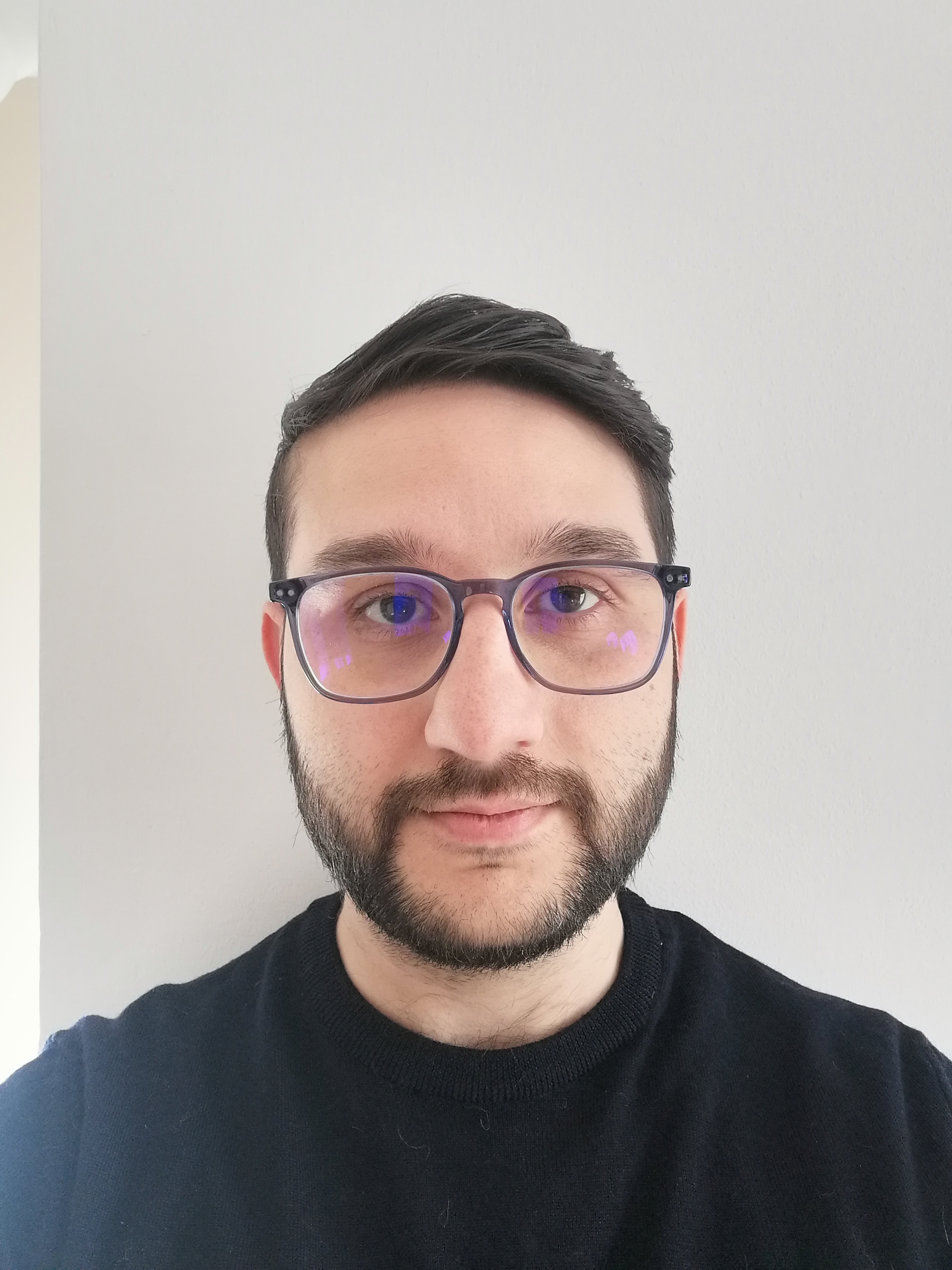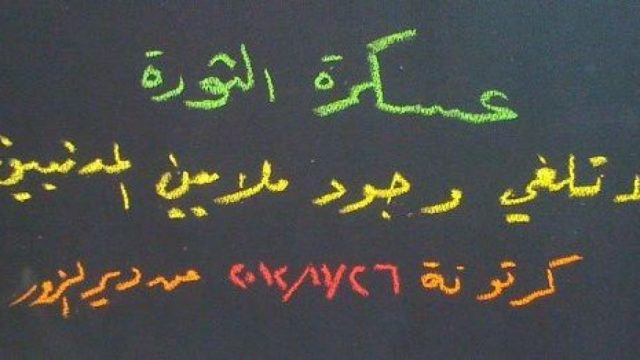Ongoing clashes and violations, revenges and ambitions are causing many concerns in the post- Assad Syria. But security is not the only issue: the lack of transparency from the government regarding the national dialogue and next steps of the transitional phase are also worrying for Syrians. SyriaUntold interviews researcher and analyst Suhail al-Ghazi on these matters.
Can you explain, beside the absence of the regime's allies on the ground, what happened inside the Syrian Army during the week preceding the fall of the regime? And how is the military situation now, one month after the fall of the regime?
It was a ghost army; the number of skilled and experienced soldiers and officers on the frontlines was very limited and they couldn't hold the ground. The Syrian army was known to be incompetent but the inability to bring reinforcements fast enough to defend Aleppo and Saraqib caused what unfolded. The first reason is corruption; the officers were taking bribes to let soldiers who didn't want to be on frontlines to go away, given how conditions were poor in terms of food as soldiers were complaining about food rations and often accused senior officers of stealing their food rations. The second reason was the demobilisation decrees, issued in the past years, which reduced the number of soldiers and forced the regime to rely on conscripted soldiers who didn't have any previous experience. Finally, checkpoints were used to collect fees from passing trucks and passengers, but not to defend the roads, especially in Aleppo and the western countryside.
The current military situation still resembles a factional army rather than a unified national army, former opposition fighters now are becoming soldiers, security force and police force at the same time but their loyalty stays to their commanders. Some violations in various areas can be attributed to local opposition fighters who returned to take revenge from loyalists in their communities.
On the Inevitability of Militarization in the Syrian Uprising
14 November 2016
What are your observations regarding the forces liberating the South of Syria and the differences with Hay'at Tahrir al-Sham (HTS) or the Syrian national Army (SNA) in the north? They’re very different actors that worked together for a common goal. And what are the current risks, knowing the infiltrations of ambiguous criminal figures in the different branches reunited? I’m thinking for example of Ahmad al-Awda, commander of the Southern Operations Chambers, a pivotal figure in the fall of Damascus, previous rebel leader and then regime and Russia’s collaborator.
The main risk is local infighting caused by previous grievances. The security situation in Daraa after the reconciliation agreement in 2018 was tainted with infighting between various parties, of course the regime and its main policies were the main instigators but the threat remains. We saw that recently in al-Sanamayn city where the local militia with previous ties with the regime clashed with locals and it only stopped when the new administration/HTS sent its forces to the area. On the other side, Ahmad al-Awda’s ambition will drive him to be the prominent figure from Daraa province, but his methods will change from the previous years when he used the 8th Brigade for his own benefit: he will probably act now like Ahmad al-Shara’a and focus on politics and his connections to locals in south Syria.
The anti-regime fighters in the South can’t be considered Free Syrian Army (FSA) anymore. Many have hatred for Assad but some in the leadership, like the 8th Brigade, just wanted their piece of cake, and some are actually affiliated with the rebels in the north (which helped secure a grip on Damascus). The SNA is still driven by its commandership and task to fight SDF and won't be able to threaten the HTS-led coalition.
The main trends now are violations committed by the new administration/government and the dangerous misinformation spreading on social media.
The SNA is now meeting the new Minister of Defence and al-Shara’a and not publicly refusing to be a part of the new Syrian army but its commanders want to hold on to their power as much as they can. Now SNA is involved in the battle for east Syria against SDF which is mainly happening near Tishreen Dam in Aleppo eastern countryside. SNA is trying to capture the area south of Kobane and put pressure on the SDF in the city. The fighting is going back and forth with SDF advancing then withdrawing; but it’s clear that SDF is considering this battle very important because it doesn’t want to lose a Kurdish city especially before the new Trump administration and the plans to withdraw American forces from Syria.
In the past few years, the world has ignored Syrian suffering and the ongoing conflict but also ignored the peaceful protests in Suwayda in 2023-2024. How in your opinion the peaceful movement in Suwayda contributed to the liberation of the city a year later, beside the armed groups? What role can peaceful protest play today?
Suwayda protests played an important role in exposing Assad, with protests supported by minorities that lasted for more than a year. It also helped to show that a civilian path can be built on later. Although local fighters from Suwayda previously didn’t fight outside their province, when all South Syria moved against the regime, it was obvious he had lost power and control, and armed groups moved towards the capital.
Sweida before 17 August… I Was There
13 September 2024
The protests can still be the voice of the Syrians to express their ideas, but also a unifying way for all Syrians to meet and talk. For example, protests in Suwayda continue to demand civil Syria to respect human rights and like-minded people from other provinces have visited the protests and talked with locals. Same can happen in other areas as citizens know how protests can unify people and make their voices heard.
You have also monitored social media contents in relation to military and governance developments. What did you notice in the period immediately before the fall of the regime? What are now the trends relating to military operations in the new framework?
In the weeks preceding the fall of the regime, there was more anger towards the recent decisions to replace subsidised food like bread, in addition to diesel and gas, with monthly payments. This would have caused a huge burden on the families, as 90% of citizens were under the poverty line. Another example comes from Aleppo, where the police issued arrest warrants against citizens who on social media expressed their disapproval towards a company collecting fees for car parking in the city. This was followed by a lot of anger too.
The main trends now are violations committed by the new administration/government and the dangerous misinformation spreading on social media. Many Syrians are now realising how bad misinformation can affect their lives and they’re trying to separate it from actual violations happening on the ground.
Regarding political prisoners freed, what are the steps in your opinion that should be taken now? What are your thoughts regarding the amnesty granted to former officers registering with a new card and deposing weapons?
There should be a national registry for the missing, both detainees and forcibly disappeared, where information is obtained through families and the archives found in the different regime prisons and security structures. This procedure should be led by the families while civil society can provide support and experience. It is an issue that cannot be left to grifters on social media who abuse the families' plight.
The current amnesty is partially good for Syria now, it gives the opportunity to investigate what the army and security forces’ personnel did without mass arrest of men, especially in loyalist areas. But for this to succeed, it needs the violations to stop and to announce a real-time political process that includes transitional justice. The current application of the amnesty and silence from the government is probably making people question if the amnesty is going to lead to justice or not.
Beside celebrating the fall of the regime, all Syrians are hoping for a peaceful political transition. However, the country has been bombed by Israel, US and Turkey, and Mohammed al-Bashir, very close to HTS’s leader Ahmed al-Shara’a, was appointed as interim PM. What are the possible consequences of these current developments?
The ongoing clashes and violations happening in northeastern Syria have bad consequences on social coexistence. The US doesn't have a plan for what to do in Syria and Turkey is insisting on ending SDF in its current form. SDF unfortunately does not understand how significant is the issue of its connection with PKK and how it needs to take a more Syrian-centered path. Israeli airstrikes and ground invasion are not met with a lot of attention in Syria for various reasons, but we are actually seeing an occupation happening and civilians being subjected to it after years of enduring war and oppression as in Gaza and Lebanon, the international community is turning a blind eye on how important it is.
The ongoing clashes and violations happening in northeastern Syria have bad consequences on social coexistence.
Another issue is the lack of transparency from the government regarding next steps. This is creating pressure on citizens. So far Syrians don’t know anything about the national dialogue announced by Al-Shara’a other than reports based on unnamed sources, and the date keeps being pushed without announcing the mechanism for choosing names and committees. Syrians are connecting the Dialogue with recent statements by Arab and European diplomats who visit Syria on lifting sanctions, and this stays the most pressing matter for people in addition to security.







